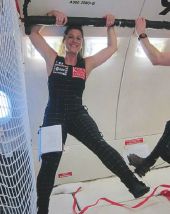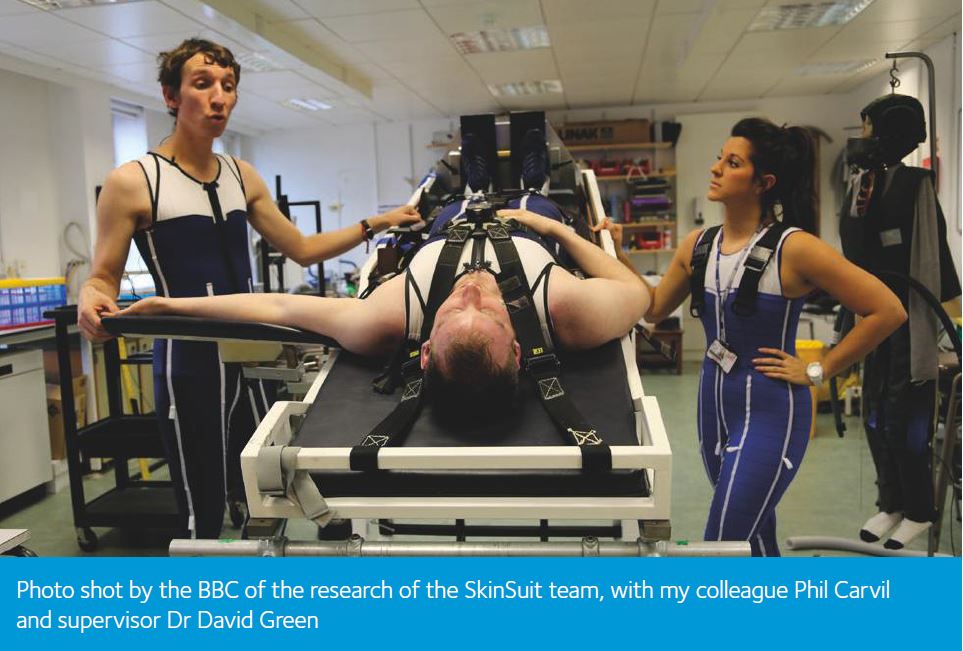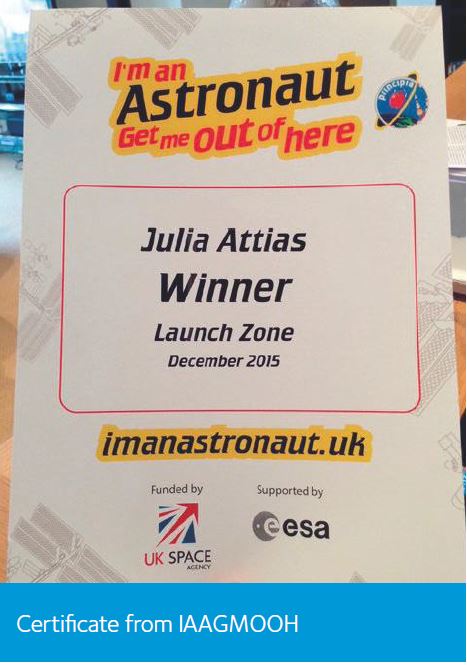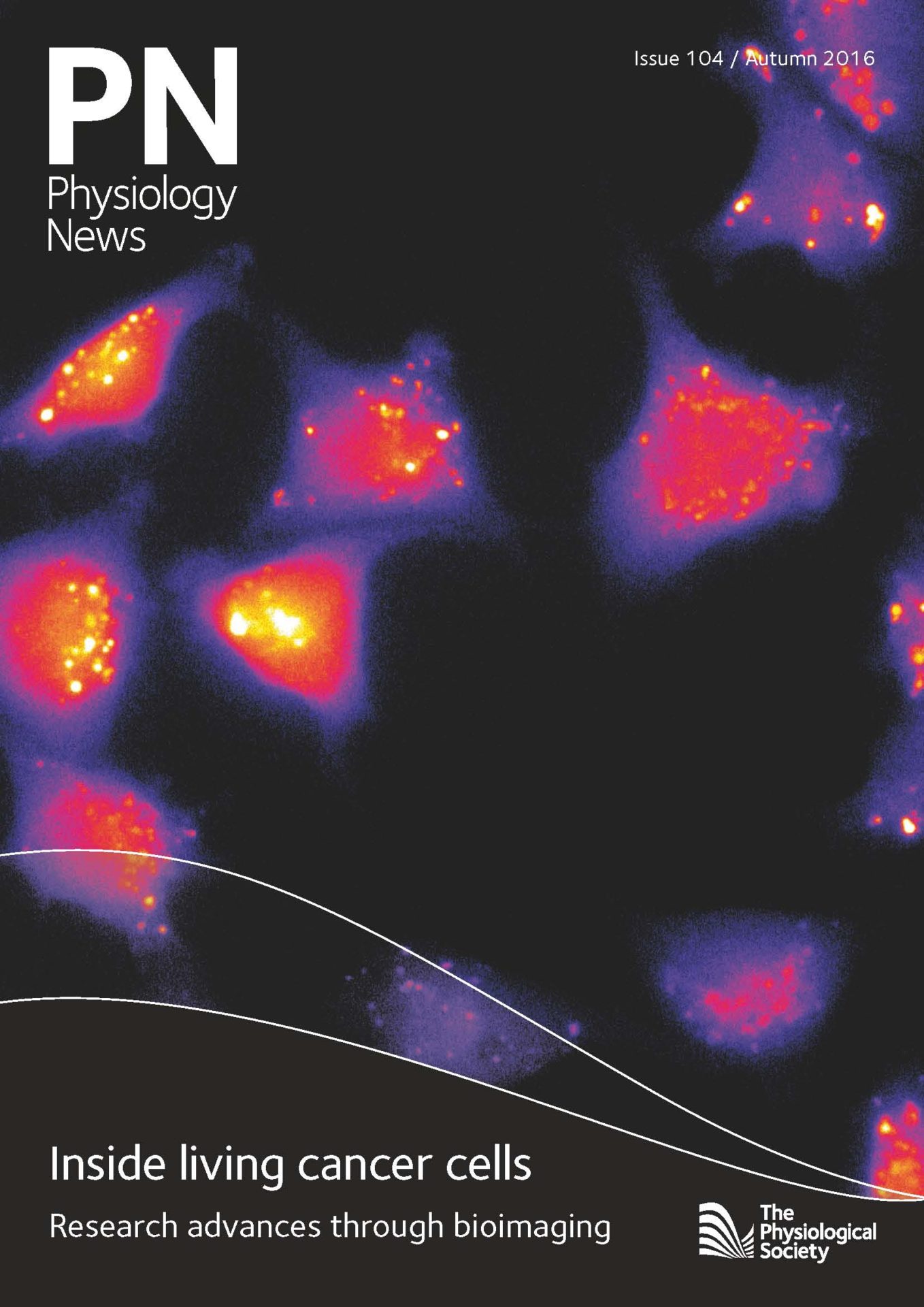
Physiology News Magazine
Ground control to Major Tom
News and Views
Ground control to Major Tom
News and Views
Julia Attias
Research Student, King’s College London
https://doi.org/10.36866/pn.104.16

Whenever I am approached with the question ‘What do you do?’ , I often find myself responding, ‘Have you got five minutes?’. Not because I want to talk about myself incessantly, but because it often takes that long to explain what I do. Replying with ‘I’m a space physiologist’ just doesn’t seem to cut it. Most either say ‘Huh? What’s that?’, or give me a bewildered look coupled with stunned silence, so I end up providing a necessitated lengthy explanation.
On the one hand it’s pleasant, because it means my work is unique and novel. On the other hand, it’s frustrating, because it leads me to believe it’s not important enough to be well-known. Admittedly, I didn’t know about the field of space physiology myself until 2011. Being always interested in extreme environmental physiology, I stumbled across the Space Physiology and Health Masters at King’s College London online, and only then did it dawn on me that it was a ‘thing’.
The UK’s contribution to spaceflight has historically been technology-based; satellites are one of the UK’s best offerings for the space sector. Tim Peake’s very recent mission to the international Space Station has not only helped immensely to put space physiology on the map – and in doing so make people understand what individuals like myself do – but has also led to the government recognising that we need an expanded space programme (which in turn will enable a wider understanding of what we do, and why we do it).
So what is a space physiologist and why are we important? As physiologists, we understand the parallels between physiology in hostile environments and clinical populations such as altitude and chronic obstructive pulmonary diseases, i.e. hypoxia as the common denominator. Microgravity environments are no different. In fact, there are numerous clinical populations that can be studied and understood using this paradigm, and ones we can all relate to.
The most problematic aspect of microgravity environments is the absence of loading. Gravity produces mechanical loading that plays a fundamental role in regulating the health and function of numerous physiological systems. In particular, the musculoskeletal, cardiovascular and neuro-vestibular systems are all highly dependent on gravity for the maintenance of normal function.



Within the first 48 hours of entrance into microgravity, fluid is displaced from the lower body to the upper body, causing a loss of approximately 8-10% of plasma volume (hypovolemia), in part due to increased water excretion via the kidneys. Hypovolemia reduces ventricular filling, stroke volume and thus cardiac output, in addition to concurrent reduced erythropoietin production. Such changes are likely to contribute to orthostatic intolerance, increased venous distensibility and aerobic capacity decrements upon return to Earth. Terrestrially based individuals suffering with postural hypotension or those with malfunctioning sympathetic adrenergic vasoconstriction are also subjected to decreased orthostatic tolerance.
The consequences of un-weighting on the musculoskeletal system displays a hierarchy in relation to muscle and bone most relied upon for maintenance of the upright posture. Loss of muscle volume and cross sectional area have been widely documented from spaceflight and bed rest studies of varying durations, ranging from decreases in triceps surae volume of 6% after 8 days, to ~24% in gastrocnemius volume after missions <100 days, thought to result from a reduced protein synthesis and exaggerated breakdown, with an emphasis on the former. Muscle strength decrements couple these volume decrements.
Femoral neck and total femur have been shown to lose 1.4% and 1.5% bone mineral density per month respectively, thought to result from reduced bone formation as a consequence of osteoblast dysfunction and excessive osteoclastic resorption. This increases fracture and renal stones risk, with bone architecture taking over one year to recover. Studies involving bed rest, Unilateral Limb Suspension (ULLS), and immobilisation, have showed analogies in musculoskeletal size and function facts and figures.
Clearly there is a bigger picture here; this is not just about the physiological de-conditioning of astronauts, but a large number of terrestrial populations, including, but not limited to those who are detrained, have sustained injuries, are in intensive care, have spinal cord injury, have casted limbs and so on. Let us also not ignore the analogies to multiple cardiovascular dysfunction and musculoskeletal atrophy disease states, and although are pathogenesis-dependent, must be considered.
As such, countermeasures employed to tackle these issues during spaceflight have just as much validity for these individuals on Earth. The work I do is a collaborative endeavour with the Space Medicine Office at ESA, MIT and of course King’s College London, and focuses around researching (by means of a PhD) with a skin-tight garment designed to provide a low degree of axial loading (~20%), in an attempt to help mitigate some of this deconditioning in space and Earth-based populations.
It’s hugely important to me to promote what I do to the wider community. It’s one thing being a scientist in a field so niche that isn’t well known; it’s another being a female scientist attached to historical stigmas and stereotypes. Whilst I have been fortunate enough to not face many barriers, and work for an institution that wholeheartedly promotes gender equality through the Athena Swan program, I know many that have been discouraged out of studying STEM subjects (and not only females might I add; those with disabilities too).
On top of working towards my PhD, I undertake a fair amount of outreach in an attempt to do my part to change that. I often attend schools, and talk to the pupils about what I do, and what else science has to offer. To show them that it isn’t just about Bunsen burners and photosynthesis – which is all I really remember from school, though thoroughly enjoyed nonetheless – but that there is a bigger Science picture. I also point out that whether you study medicine, engineering, cellular biology, chemistry or psychology, the beauty of science is the overlap to all of these disciplines, and we couldn’t do anything without a collaboration of all of these entities.
I entered a competition called ‘I’m an astronaut get me out of here’, which involved talking to school pupils on live 30-minute webchats over two weeks about questions they had relating to Tim’s mission. The students voted for their favourite ‘expert’; I was privileged to win their vote and was filled with pride from the fact that I had obviously gotten through to them, which has only fuelled me to continue. I also write blogs for GlamSci – a charity set up by a disabled female who was told she couldn’t pursue science through her entire academic life – to help inspire people from all walks of life to pursue STEM subjects.
I will continue doing outreach for as long as my time and energy permits. My other aspirations are to set up a YouTube channel to post science tutorials and interviews with scientists renowned in their fields, set up forums and workshops for teachers/academics who wish to impart space physiology knowledge onto their respective students, and collaborate with other scientists and institutions to raise STEM awareness to as many people as possible. I am always open to ideas so please get in touch with me if you have an idea that you would like to share. Alternatively, you can catch me on the Discovery Channel in September, in a TV series called ‘Meet the Superbrains’.
